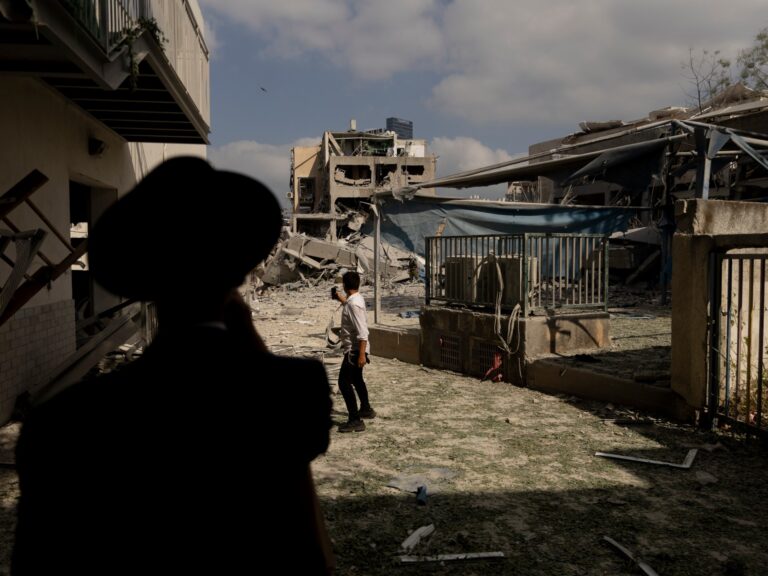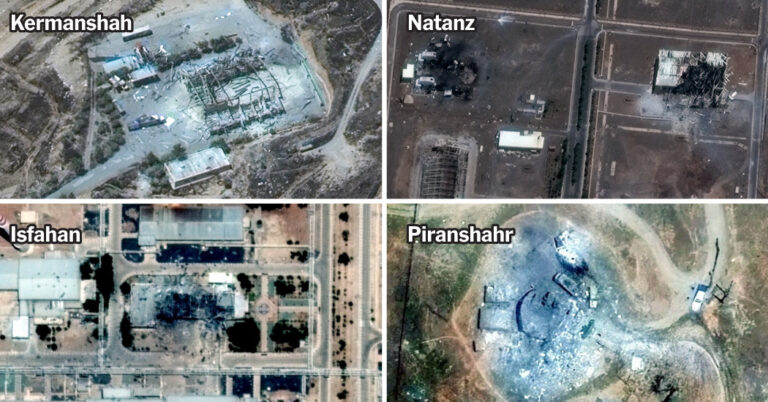Israel’s launch of air attacks against Iran on Friday prompted Tehran to fire a wave of retaliatory strikes on Israel, and some Iranian ballistic missiles have pierced through Israel’s missile defence systems and hit key targets.
Israel’s escalating attacks have killed more than 240 people, including 70 women and children, in Iran. In retaliation, Iran has fired about 400 missiles and hundreds of drones, killing at least 24 people in Israel, wounding hundreds and forcing Israelis across the country to take cover in bomb shelters.
Some Iranian strikes have hit residential areas in central Israel, causing heavy damage. Israel’s fortified military headquarters in Tel Aviv, the Kirya, was also hit although damage was limited there.
On Tuesday, Iran said it hit a military intelligence centre and a Mossad spy agency operations planning centre, breaching Israel’s advanced missile defence systems – some of the most advanced in the world.
In recent history, Israel has successfully intercepted most aerial attacks coming its way through these systems, such as its signature Iron Dome.
So how are Iranian missiles making it past Israel’s air defences?
What is Israel’s Iron Dome?
While the Iron Dome is at the heart of Israel’s air defences, it is only a part of a larger system, comprising “the lowest level of these multitiered, integrated air defences,” said Alex Gatopoulos, Al Jazeera’s defence editor.
The Iron Dome detects an incoming rocket or missile, determines its path and intercepts it. Israel said the Iron Dome is 90 percent effective. It became operational in 2011 after it was developed to counter rocket attacks during the war with Hezbollah in 2006.
Gatopoulos explained that the Iron Dome was designed to intercept low-level rockets that larger systems would not be able to detect.
Israel also has the Barak-8 surface-to-air missile system, which intercepts medium-range missiles; the Terminal High Altitude Area Defense system, which intercepts short-, medium- and intermediate-range ballistic missiles; and the David’s Sling, which intercepts medium- to long-range missiles.
What is Israel’s defence against Iranian missiles?
The Israeli missile defence systems use the Arrow-2 and Arrow-3 interceptors to intercept long-range missiles, such as Iranian missiles fired in the current conflict.
The main contractor for the Arrow project is state-owned Israel Aerospace Industries, and Boeing is involved in making the interceptors.
The Arrow-2 is designed to intercept incoming missiles at slightly higher altitudes within and outside the Earth’s atmosphere.
Besides using air defence systems, Israel also carries out air-to-air missile defence, which involves the use of aircraft, such as combat helicopters or fighter jets, to destroy drones heading towards Israel.
How do air defence systems work?
Israeli air defence systems are made of three components: a radar system, a command and control centre, and a launcher with interceptor missiles.
An incoming enemy missile is tracked on the radar, which alerts the control centre to assess which targets to engage. The launcher normally sends out two interceptor missiles for one incoming enemy missile, Marina Miron, a postdoctoral researcher at King’s College London, told Al Jazeera.
All air defence systems are equipped with a limited number of interceptor missiles, and the exact number of interceptor missiles in Israel’s air defence systems is unknown to the public.
Has Iran broken through Israeli air defences?
On Saturday, an Israeli military official said its defence systems had an “80 or 90 percent success rate”, emphasising that no system has a perfect rate, the Reuters news agency reported without naming the official.
This means that some Iranian missiles had pierced the fortifications.
How has Iran managed to break through?
While we do not know exactly how some Iranian missiles made it past Israeli air defence systems, there are a few possible ways Iranian drones and missiles managed to avoid interception.
Exhausting interceptor missiles
One way Iran possibly evaded Israeli air defences is by exhausting Israel’s interceptor missiles.
“No system shoots down 100 percent [missiles] anyway,” Miron said, adding: “You cannot shoot down more missiles if you only have a limited number of interceptors.”
Hypersonic missiles
Gatopoulos said Iran has hypersonic missiles, a direct reaction to evolving and maturing ballistic missile defences. This is because one way to evade an air defence system is to use missiles that fly faster, giving the air defence system less time to react.
Miron said hypersonic missiles are difficult for air defence systems to intercept even if they are detected by radar.
Some hypersonic missiles are also equipped with a hypersonic glide vehicle (HGV), a warhead attached to a missile that can manoeuvre and glide at speeds five times faster than the speed of sound. In Iran, the Fattah-2 uses the HGV. “It looks like a normal missile with a craft attached to the end of it,” Gatopoulos said.
He explained that besides travelling faster, HGVs also zigzag and do not move on a predictive path like regular ballistic missiles. Such quick, erratic movements evade air defence systems, which are designed to predict the path a missile will take.
Cruise missiles
Cruise missiles can also change their trajectory and become difficult to intercept, Miron said.
Iran has cruise missiles in its arsenal, such as the Hoveyzeh missile, and has used such missiles against Israel. While these missiles are slower than ballistic missiles, they fly like pilotless planes, low and steady, sneaking past air defences.
What are other ways air defence systems can be challenged?
Another way air defence systems can be tested is by overloading their systems by tricking them with decoys of drones and missiles, Miron added.
“It shows up as a threat on the radar, but in actuality, it’s not. And usually such decoys are used … to empty the interceptor missile reserve so that the actual missiles and drones can get through.”
Miron added that some missiles are also equipped with radar suppression technologies that make them undetectable for air defence systems.
Could Iran or Israel run out of missiles?
Gatopoulos explained that the conflict between Iran and Israel is “attritional” at the moment.
On Monday, Israel claimed dominance over Iranian skies. However, the shortest distance between Iran and Israel is 1,000km (620 miles). “It is a long way for Israeli planes to go unfuelled,” Gatopoulos said.
“You can loiter there, but only up to a certain amount of time,” he added. He explained that while the US could possibly help Israel with air-to-air refuelling, adding external tanks on planes makes them lose stealth properties.
Gatopoulos added that this raises questions of how many missiles Iran has to continue the conflict of attrition as Israeli planes patrol and try to destroy any mobile launchers and how many interceptors, Arrow-2 and -3 especially, Israel has that it can keep firing.














